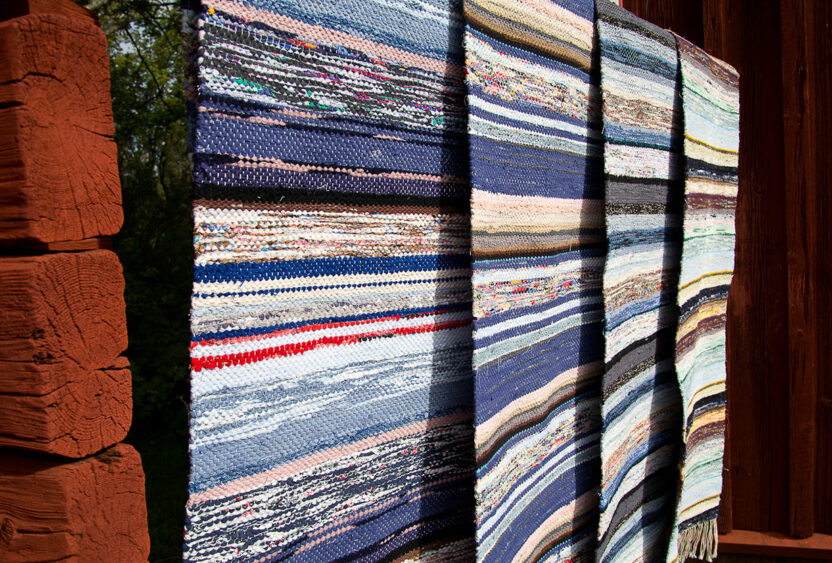The National Inventory of Living Heritage

Handicraft items on the The National Inventory of Living Heritage
Every time we make crafts like weaving, knitting, carving, we are maintaining the living heritage of crafts. The following crafts have been inscribed on Finland’s national inventory of intangible cultural heritage under the UNESCO Convention:
- Knitting tikkuröijy sweaters from Hailuoto island
- Kainuun peilikäs weave
- Making a national costume
- Handcrafted shoemaking
- Korsnäs sweater
- Goldsmith work
- Glass blowing
- Dyeing with natural dyes
- Repairing wooden boats
- Chainsaw sculpture
- Knitting
- Lace-making in Heinämaa village
- Building and sailing on clinker boats
- Manufacture of baskets from shingle
- Lace making in Rauma
- Building a hanging fence
- Ryijy tradition
- Rag rug weaving
- Making of Tommi knives
- Wall rug tradition in Vesilahti
Behind these crafts are large communities that actively maintain and develop a living heritage of craftsmanship. At the heart of the UNESCO Intangible Cultural Heritage Convention are the communities that practise these traditions. The Convention is international in scope and aims to help communities to maintain the vitality of their traditions and to raise awareness of the importance of living heritage. The Convention for the Safeguarding of the Intangible Cultural Heritage has already been signed by 178 countries. The UNESCO Convention obliges States Parties to maintain inventories of intangible cultural heritage. The purpose of the inventory is to give visibility to living heritage and to share good practices in the conservation of living heritage.
In Finland, the Convention is implemented by the National Board of Antiquities, which maintains a wiki-list of living heritage. The wiki-list presents traditions, skills and practices that are important to communities, large or small. Communities can use the wikis to tell about their own living heritage, how they maintain it and how they pass it on. It is also a living list; it is a document that is constantly being added to and updated.
From the Wiki list, it is possible to make proposals for the national list of living heritage. To be included in the National Inventory is recognition of the work of communities on living heritage and an opportunity to gain visibility for locally significant cultural heritage. There are currently 20 crafts on the National Inventory.
It is possible to apply to UNESCO’s International List of Intangible Cultural Heritage from the national list. The Ministry of Education and Culture decides both on the sites to be included in the National List and on the proposals to be submitted to UNESCO.
